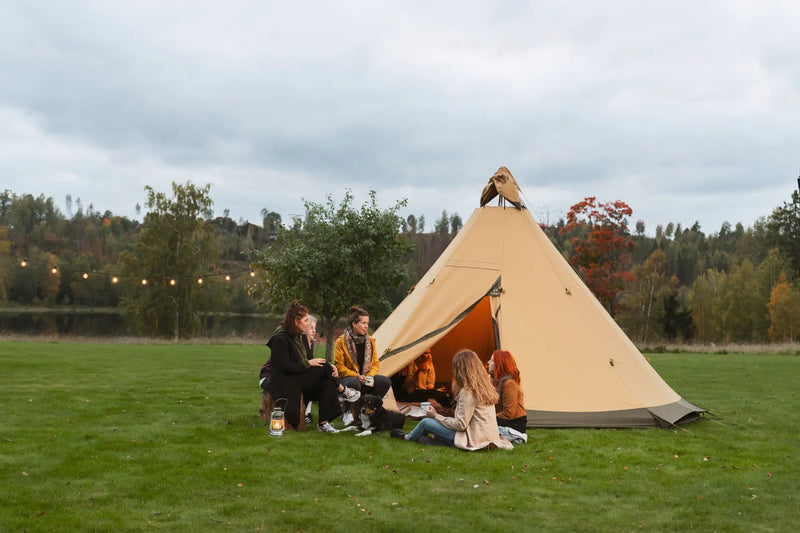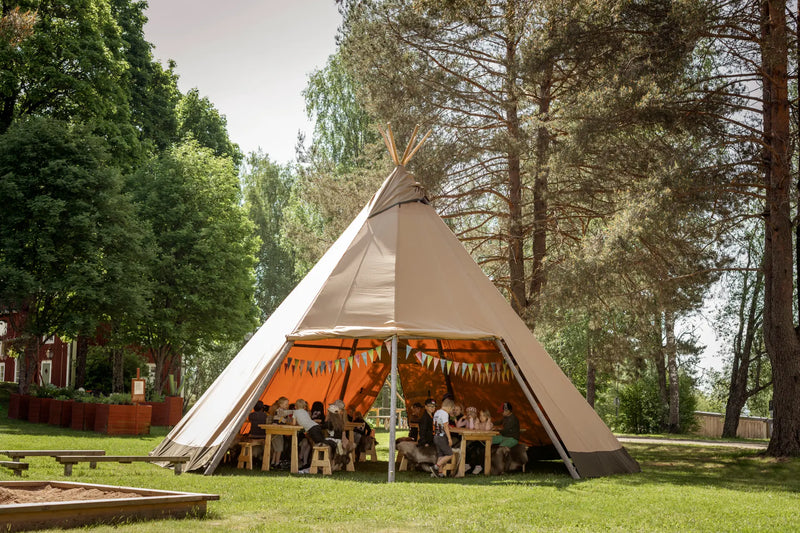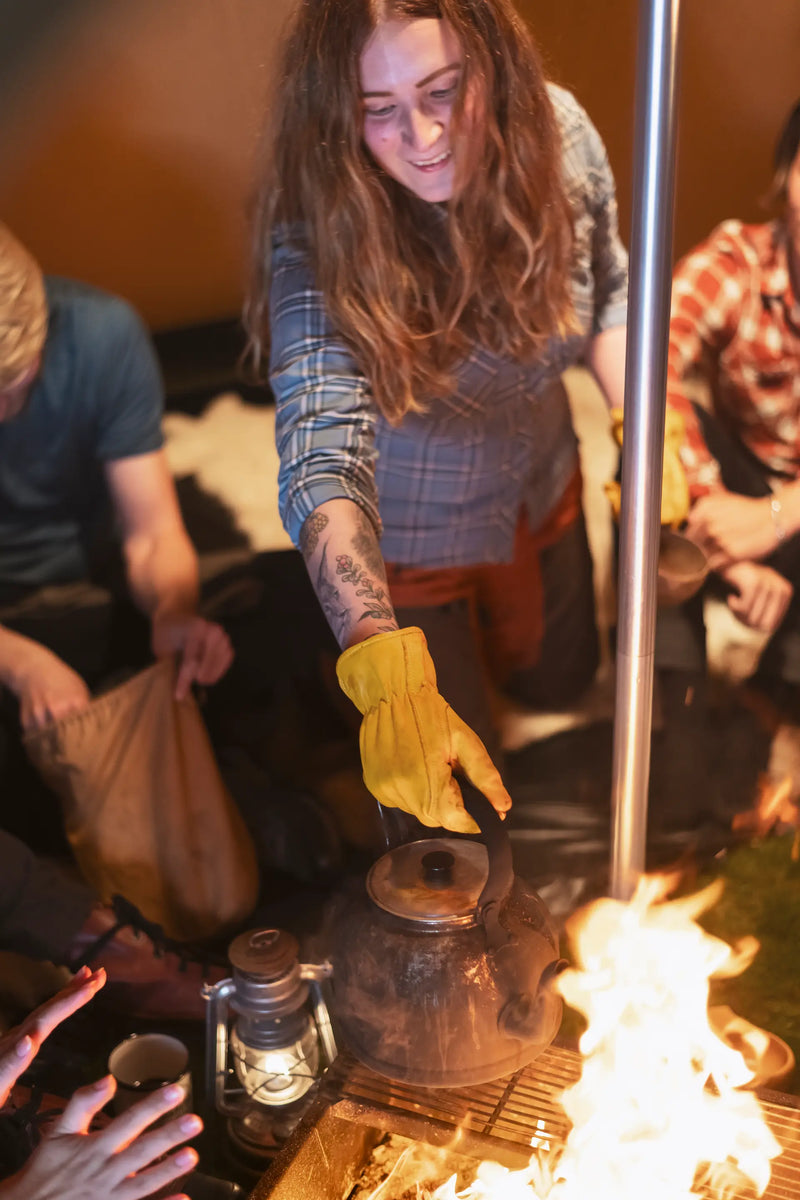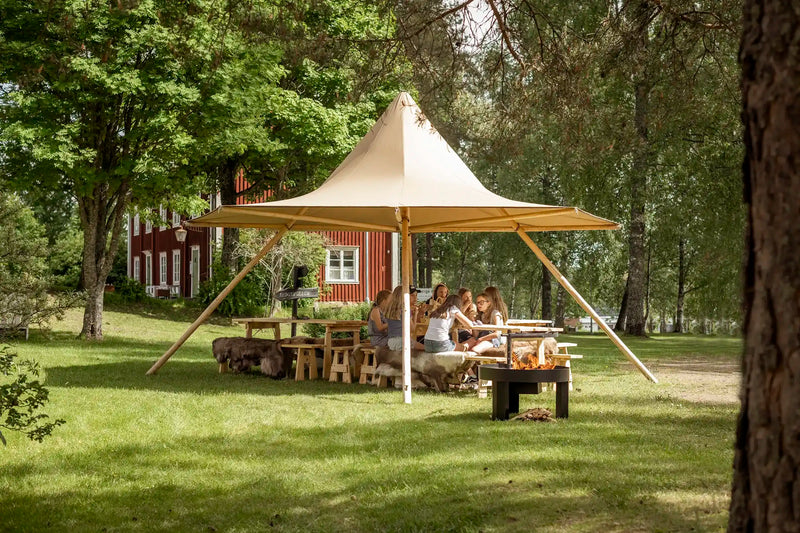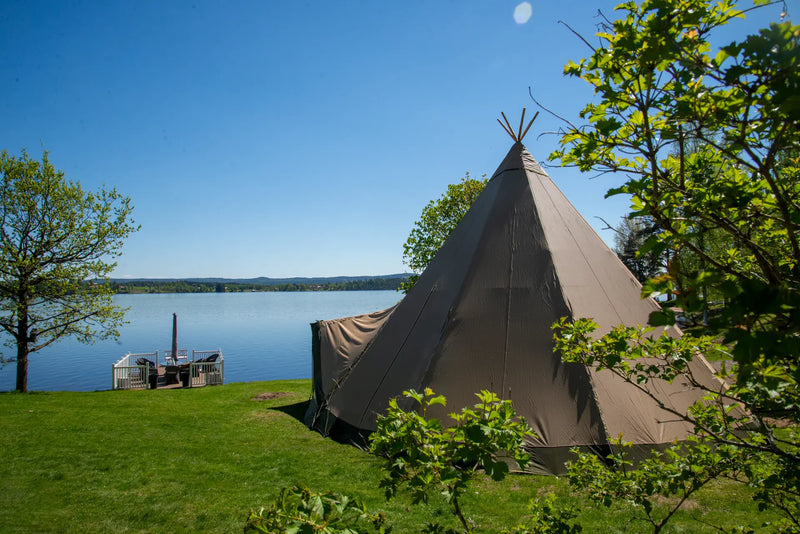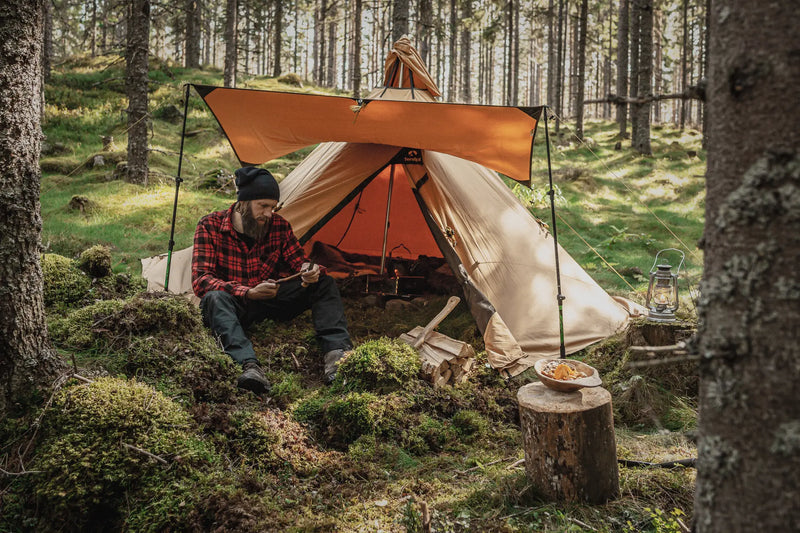A nomadic tent could be pitched and taken down in a short time to be able to quickly protect those who lived there. The Adventure tents from Tentipi have a central pole as a load-bearing shaft and combined with seams and reinforcement details, which are parts of the tent frame, the central pole make it possible to pitch the tent in a few minutes. When you have done it a couple of times, it takes no more than three minutes. That is also true when the wind is strong because the tent fabric is first anchored with ground pegs and then you raise the tent with the central pole that is put into its sleeve at the top and placed in the middle of the “tent floor” — the place you have decided for your tent. It is possible to use the tent without assembling a floor in it, but you can also have a floor or an inner tent to get extra protection against insects.
